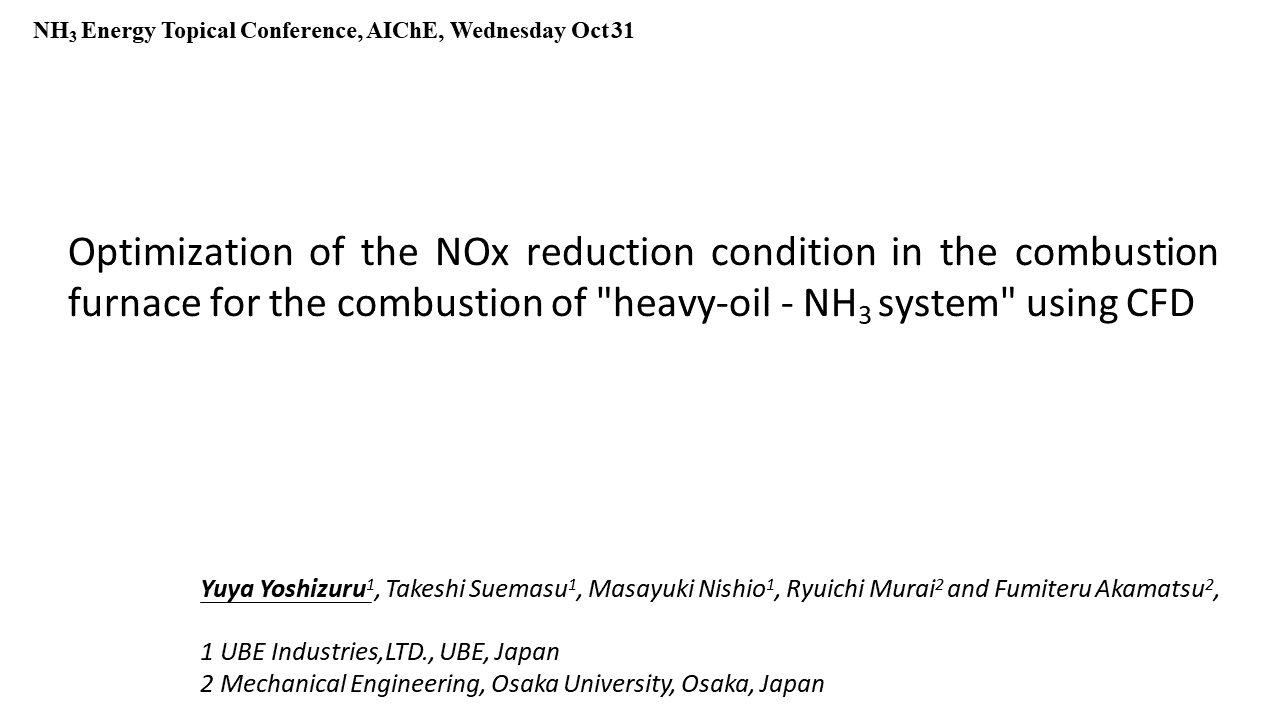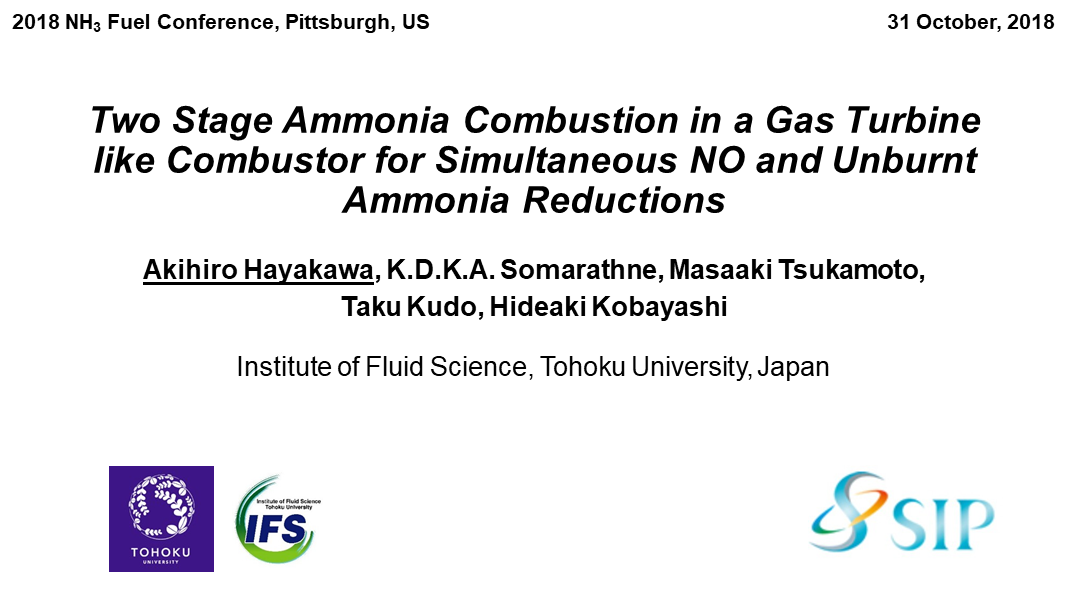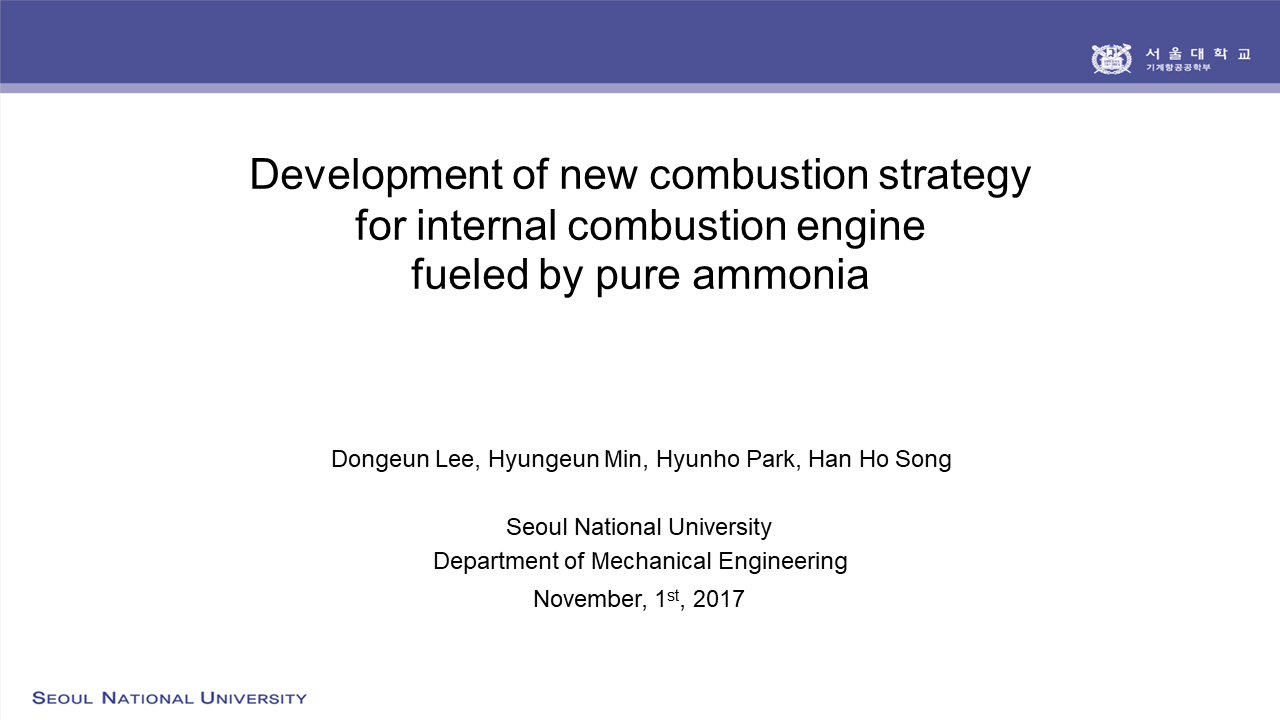Presentation
Experimental and Computational Study for Reduction of NOx Emissions in the Ammonia / Methane Co-Combustion in a 10 KW Furnace
There are severe issues on increasing amount of carbon dioxide (CO2) emission in the world. Many studies are devoted to alternative fuels. One of promising candidates is the utilization of ammonia which is zero emission of CO2, a hydrogen energy carrier, and also can be burned directly as a fuel. For direct combustion of ammonia in industrial furnaces, there were two issues which were weaker radiative heat flux and a huge amount of NOx emission compared with the combustion of methane. We already have reported [1] the solution of the former issue by using the oxygen enriched combustion. The objective…






